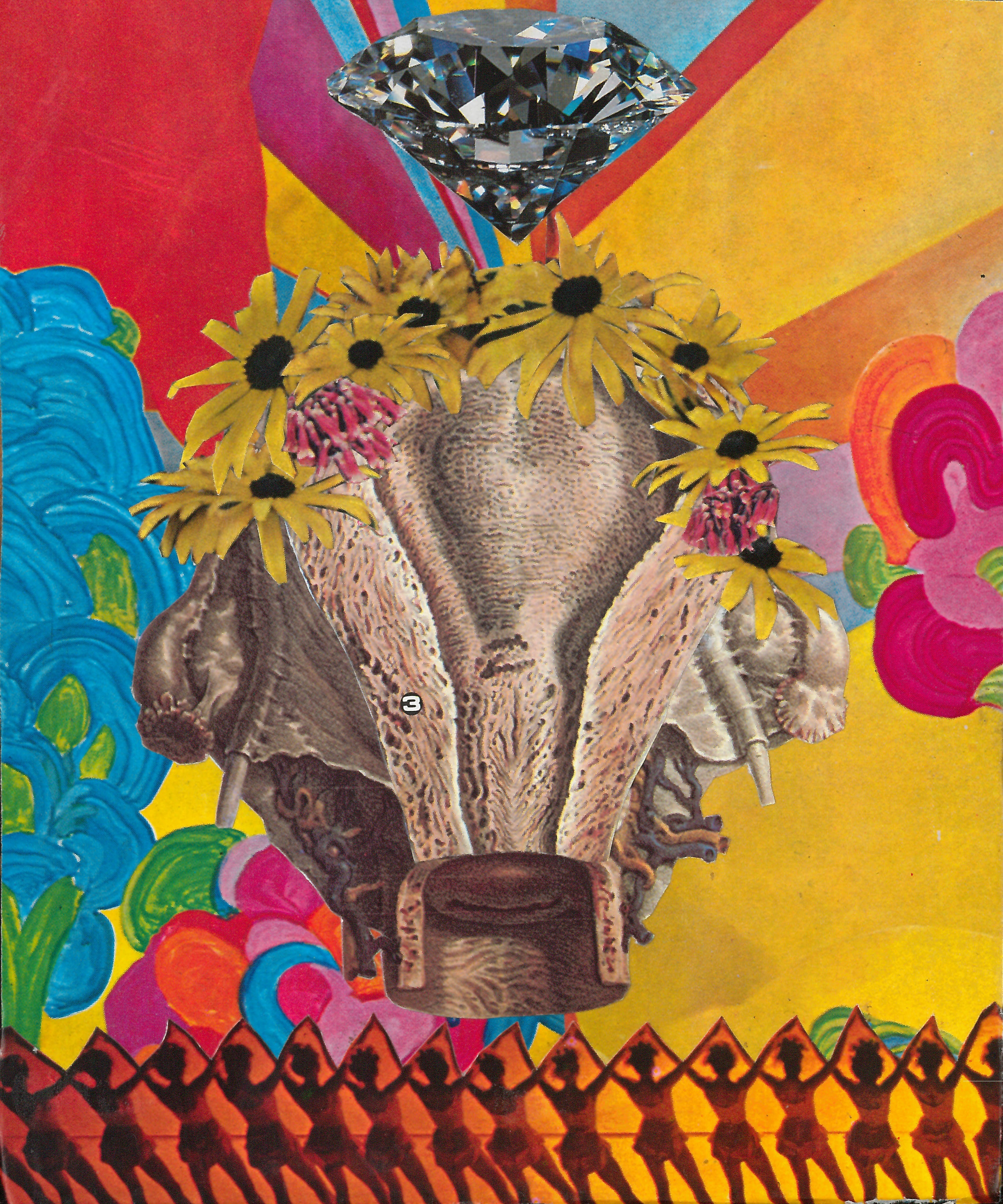Written by Rhoda Ulexite.
Art by Jenica Caudill.
When I turned 24, I celebrated my 10-year anniversary of being on birth control.
Well, “celebrated” is too positive of a term. I have run the gamut of birth control. My body has been under the influence of extra hormones longer than the lifespan of a high-adrenaline golden retriever. Although I eventually took the lowest possible dose of the estrogen/progesterone combo, I’ve never felt quite the same after the first time I ventured out for my first pack of pills.
I was living in Winnipeg at the time, albeit in a distant suburb. After my first relationship and my newfound sex life ended abruptly with a pregnancy scare, I decided to embark on a search for birth control. I found it at an underfunded and clandestine women’s center deep in downtown Winnipeg. The nurses and receptionists were exceptionally kind, discrete, and patient, but they never instructed me on how to use the pills. I didn’t know you had to take them on a schedule. I waited to start my next pack until my period came to a complete stop, instead of starting again on the eighth day, for the next seven years.
This furtive run to downtown Winnipeg continued until my late teens, when I started undergrad and learned that birth control pills can cause depression, anxiety, and brain fog. That was news to me! But the feelings of deep sadness and unwarranted fear weren’t. They’d started around the same time I got my first pack of pills. Things shifted into focus as I realized I didn’t have to accept depression as my natural state.
My NuvaRing cycle ended within two weeks—when I found myself on the floor of my crowded dorm room, face glistening with tears, seriously contemplating jumping off a building.
I was conflicted, though. I’d become consistently sexually active a year after I “lost” my “virginity,” and there was a deep aversion within my soul to the smell of condoms. So, I shopped around for different devices to quash my body’s interest in getting pregnant. At first, I tried the NuvaRing, a small, plastic ring about two inches in diameter that’s inserted at the beginning of each month. Three weeks pass, you take it out to have your period, and on the cycle goes.
My NuvaRing cycle ended within two weeks—when I found myself on the floor of my crowded dorm room, face glistening with tears, seriously contemplating jumping off a building. My girlfriend wasn’t texting me back. I’d smoked too many cigarettes and my throat was gummy. I kept spilling shit on my white shirts, and goddammit, I just wanted to own something that wasn’t stained from spaghetti sauce or coffee. I shaved half my head, got off the floor, and ripped that ring out of me. Sex be damned, I wasn’t willing to be in fits for the devil that is estrogen. The side effects stopped within a few hours.
I had to do more shopping. The Depo-Provera shot was scary because there was no way to get rid of it once it was in your system—same with Nexplanon, inserted in the arm. After the NuvaRing, that made me nervous. So, I switched back to pills, my depression decreasing but not disappearing, and my anxiety skyrocketing as I started graduate school.
It wasn’t until I discussed my gender with my current doctor that an IUD was suggested. I was told it’d likely get rid of my periods, which sometimes bring on dysphoria. More important to me, an IUD can last as long as five to 10 years. Years! In my body! I’d be well into my thirties by the time I’d need to have it replaced and, hopefully, by then the white men running our government will have slipped into irrelevance.
I am in charge of this form, and no one else is. They don’t have the IUD. I do. And I decided to put it here.
My soft-spoken OB-GYN moved gently as she vocally guided me through the insertion process—clamping open the cervix, measuring my uterus, general poking around. The room was warmly colored, its walls decorated with drawings by kids whose mothers had done the same thing I was doing that day. As the IUD finally went in, I felt a crescendo of cramping pain—like I was trying to give birth to a beach ball.
But then my OB-GYN said, “That’s it.” I blurted out, “That’s it?!” And that was it.
My ibuprofen, heating pad, and homemade yarrow and plantain leaf salve were at the ready. I was prepared for the pain. I wasn’t prepared for the joy, sexuality, and calm that the IUD has given me.
After a few days of cramps passed, I started to reflect on how the new device would change my life. Instead of blindly hoping the pill would absorb correctly, I can feel the birth control I’m on—the strings tuck around my cervix, always dutifully in place when I panic and check. The physical presence of the IUD puts me back into my body, too. I am in charge of this form, and no one else is. They don’t have the IUD. I do. And I decided to put it here.
The device that’s going to sit inside me for the next five years performs its job slow and steady. With its help, I am now an anti-baby zone. Like a downloadable skill in the Matrix, the IUD is new software. Finally, I’m a proud cyborg.
Truly inspiring is the return of my libido. Somewhere along the way, it went missing. Maybe it was that streak of dating straight, cis men. Maybe it’s that I viewed sex as usually-not-worth-it due to the chance I’d have to deal with unwanted pregnancy in places where abortions are increasingly harder to access. Either way, because I took control of my ability to shape my body into what I need, and because I am untouchable by trigger-happy legislators with captured uteruses on their minds, I am happy—and ridiculously horny. Whatever aspect of my experience has sparked this new reality, I owe it to my IUD. I’ve never felt more alive in my own body and overjoyed to be a sexual, queer, cyborg-ed out being.
About the Author
Rhoda is a Queer communist living in Toronto. They are a low-wage worker who enjoys making kitschy crafts, developing homemade salves, and pickling every vegetable they come into contact with. They have a deep appreciation for the natural world outside and within the city, and are currently writing their thesis on anti-poverty activism and radical green spaces. Their name is a pseudonym, made from their favorite Virginia Woolf character and a crystal which has the power to magnify and clarify images.
Follow on IG: @them0dedepeche | Follow on Twitter: @

